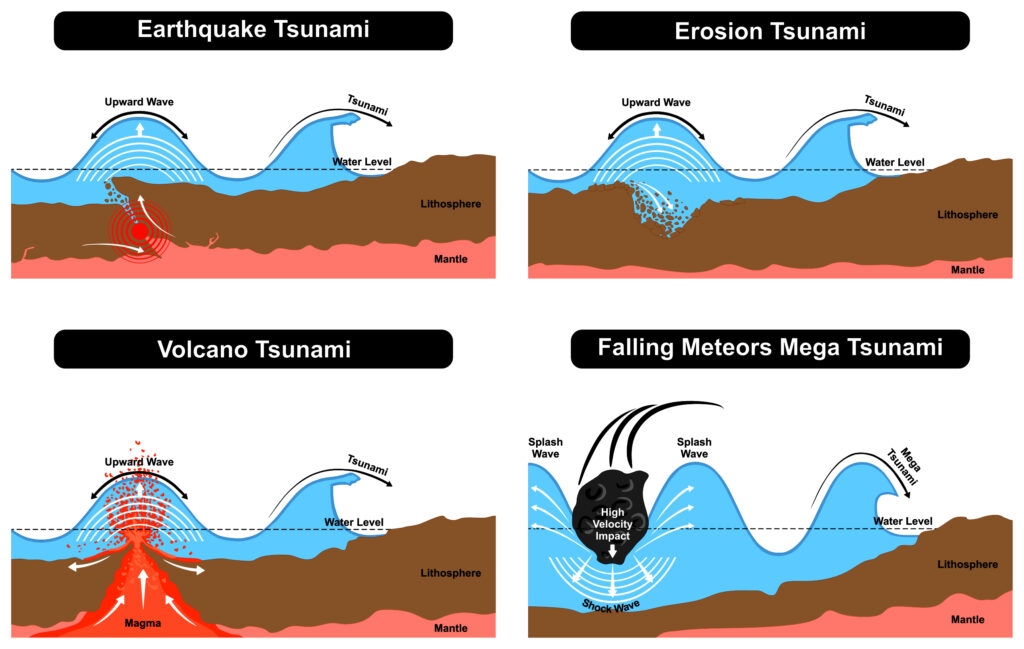Tsunami waves hit several parts of Japan’s coastal areas and urgent evacuation warnings were issued after a 7.6-magnitude earthquake shook the country’s north-central region.
What is Tsunami?
Submarine earthquakes have generated about 80% of all tsunami events recorded globally.
|
Scientific Basis of Tsunami – Earthquake based |
|
The wavelength is a factor which distinguishes tsunamis from wind waves, a tsunami wavelength can be more than 200 km long which is considerably longer than a wind wave wavelength.
|
Conditions for an earthquake to cause Tsunami |
|

India is one of the 10 worst disaster prone countries in the world.
|
Why is Japan prone to earthquakes and tsunamis? |
|
|
National Disaster Management Authority (NDMA) |
|
Indian National Centre of Ocean Information Services (INCOIS) is the Nodal agency for Tsunami related early warning system.
|
India’s relief operation aftermath of Tsunami |
|
References